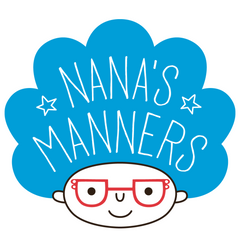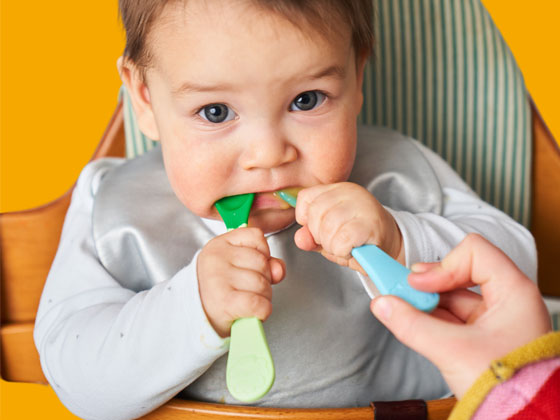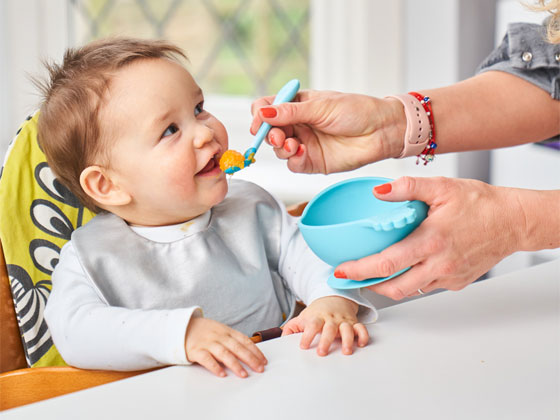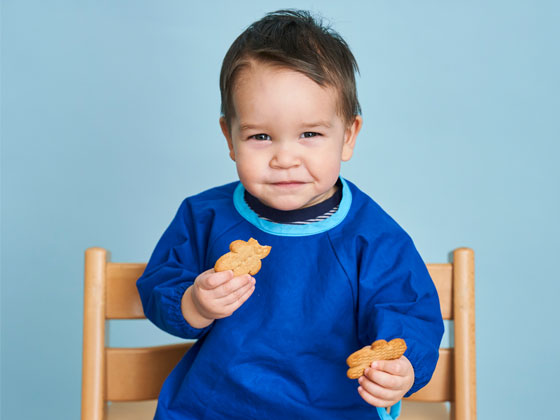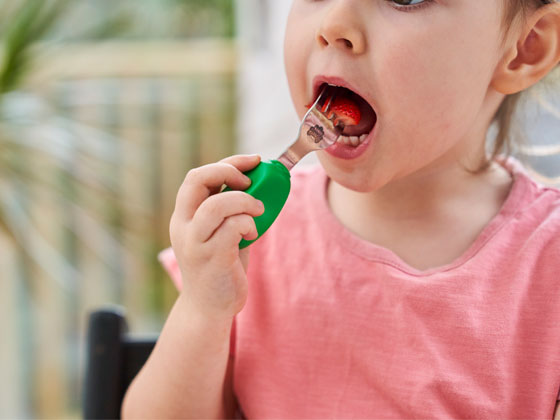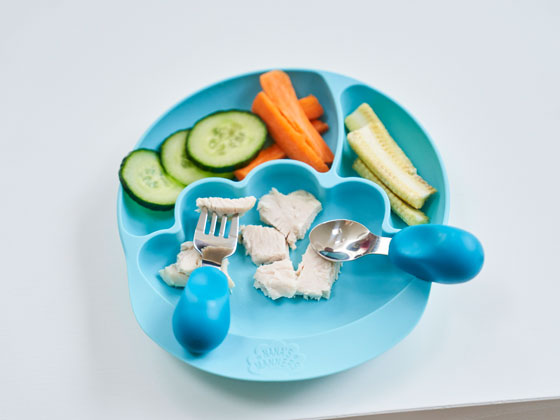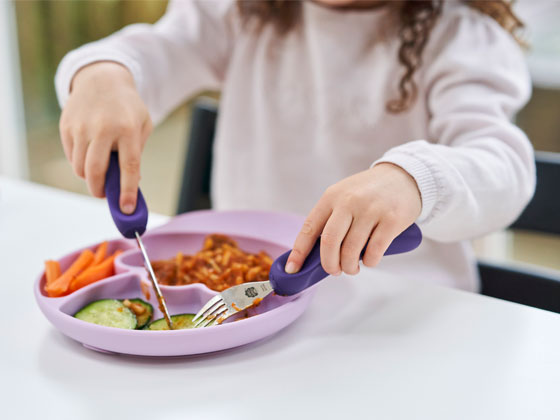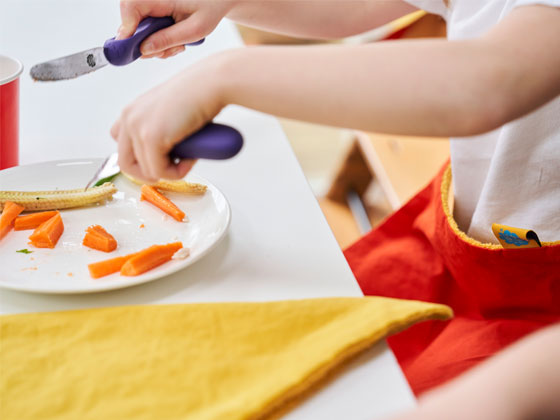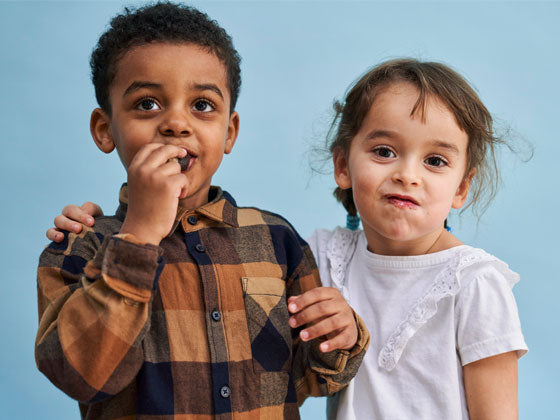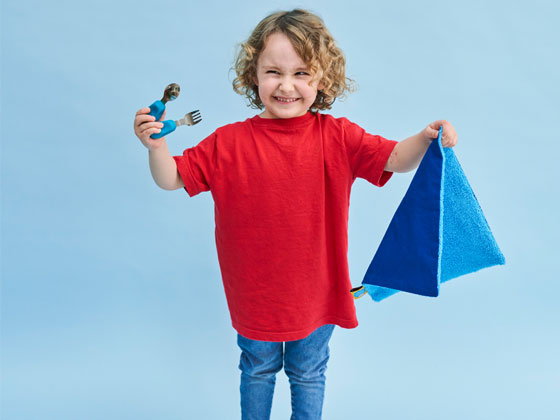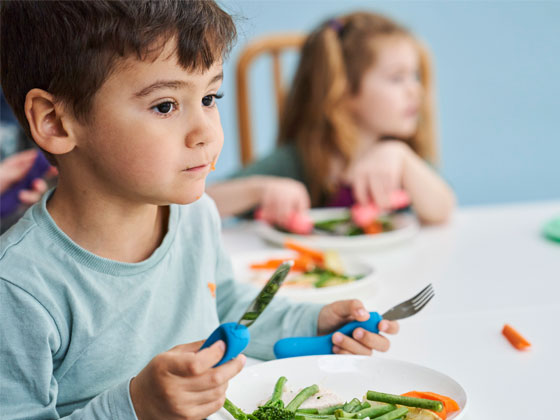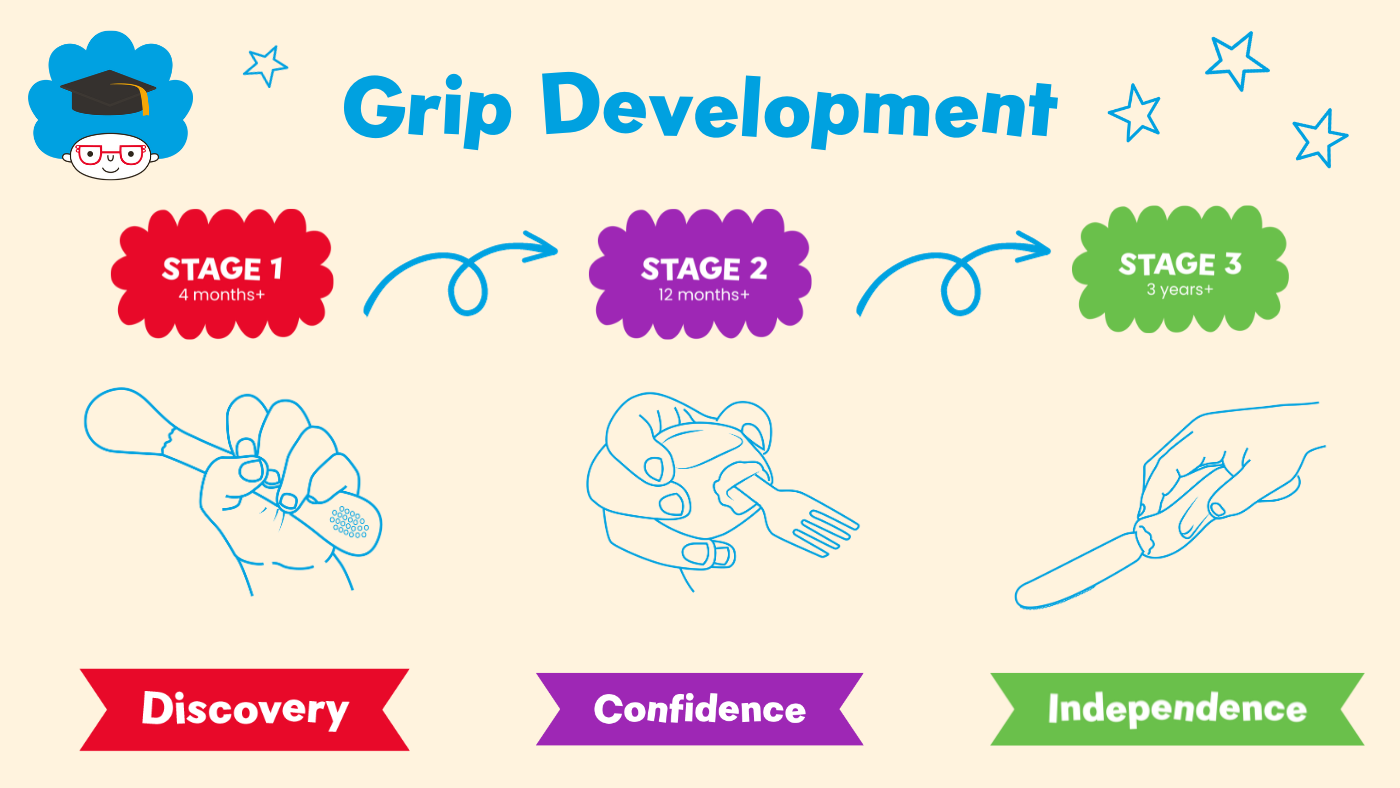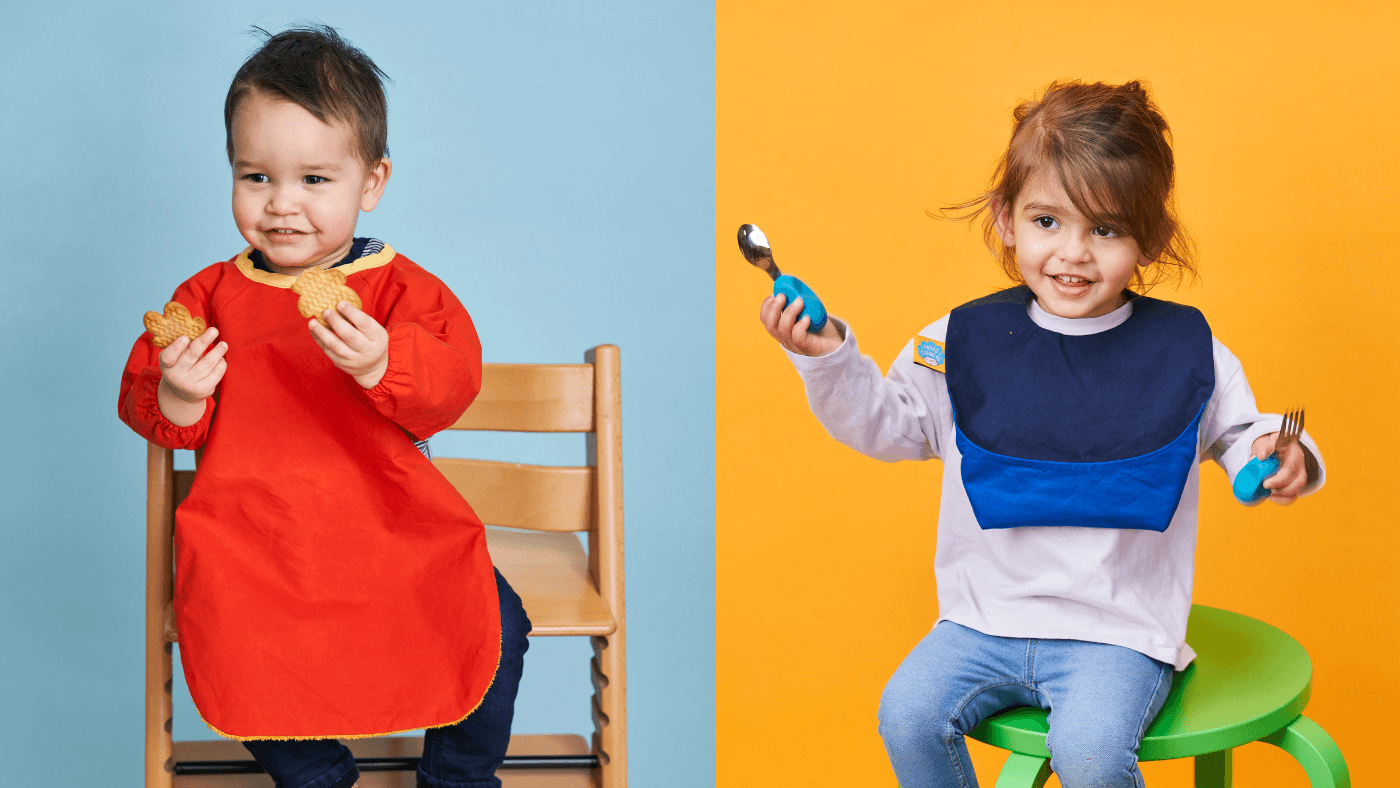Grasp development in babies and children is the foundation of the design of our unique cutlery. The process is fascinating! Palmar, Pincer and Tripod – what are they and how can you support your little one's journey of development?..
Palmar Grasp

What is the Palmar Grasp? Babies are born with a grasping reflex – when those cute little fingers instinctively close around one of yours - but this movement is instinctive, and they have no control over their hands at this point. It takes time for their muscle control and coordination to develop enough that they can grab items by their own accord. Between 4 and 6 months old, they'll begin to be able to reach for and grab something they want to get their hands on and hold objects without your help.
Why is the Palmar Grasp important? Being able to grip things is your baby's first step on the road to eating, reading, writing, drawing, and independence. The first grip style they use is known as Palmar Grasp. This is a full hand grasp, beginning with a few fingers and eventually involving the thumb to hold an object. Around 6 months old, your baby will likely be able to reach, grab and start picking up things using the palmar grasp so they can try to put them in their mouth. (Time to put all those small items out of reach!) They’ll also start trying to move objects from one hand to the other.
When your baby starts eating solid food, they won't be able to hold a baby spoon steady, but they'll try, and letting them is an important part of their development. Using a light spoon, sized to fit in the palm of their hand will set them on their journey of discovery!
Nana’s Manners Stage 1 Weaning Spoons are lightweight, with handles sized to fit perfectly in their palm as those little fingers wrap around it. The small 100% food grade silicone tips are perfectly sized to prevent overloading and fit comfortably in those gorgeous little mouths!
Pincer Grasp

What is the Pincer Grasp? The Palmar grasp can work well for larger objects, but babies won't be able to grab smaller objects, like peas and raisins, until they develop the finger dexterity needed for the pincer grasp. This happens when they’re around 9-10 months old. The pincer grasp uses the forefinger and thumb together to “pinch’ or grasp a smaller object. It is an important fine motor skill that’s key to many functions your baby will use moving forwards, including self-feeding whether with fingers or using cutlery.
By around 12 months your baby is now perfecting their pincer grasp, which lets them pick up small objects between their thumb and forefinger and get finger foods into their mouth. They will also use the pincer grasp to gain more control over their toddler cutlery – using the forefinger and thumb to control and direct the cutlery with the other fingers supporting the handle.
Why is the pincer Grasp important? With this increased coordination, your toddler will enjoy experimenting with using a spoon and then a fork at mealtimes, though at first they may prefer to hold the utensil in one hand while using their fingers to actually eat. You'll probably have to help them hold the spoon or fork when you show your baby how to use it, but they'll get the hang of it more quickly if you let them give it a few tries at every meal. Pre-loading is a great technique here – you can read more about this in another of our articles here. This next step in their grasp development will increase how they can interact with their toys and other objects around them.
Nana’s Manners Stage 2 Fork & Spoon sets are designed with uniquely shaped handles that can be held in different ways to encourage the development of the Pincer grip. The indentations of all 4 sides allow all fingers to be supported comfortably whilst toddlers work on their fine motor skills and co-ordination at as they eat. The short, soft-touch handle sits comfortably in their palm building their confidence at every mealtime!
Tripod Grasp / Grip

What is the tripod grip? A three fingered, or tripod grasp is when the thumb, index finger and middle finger work together to pick up small objects. A child typically develops this grip around the age of three or four years old.
Why is the tripod grip important? It is a functional grasp which is essential for a number of tasks, such as holding a pencil or fastening buttons. This grasp is used throughout the day and is an essential part of their grip development. As children improve their dexterity, co-ordination and fine motor skills, they will be able to move into a tripod grip more easily from a relaxed hand.
How you can help your child develop their tripod grip? Demonstrate to your child how you use a tripod grasp by modelling the grip and showing them.
Offer your child plenty of everyday opportunities to handle small objects (if safe, under supervision and if appropriate of course) to practice using a tripod grasp e.g. serving them small (safe) snacks such as raisins or peas they can pick up using this grip, helping to put lids on and take them off drink bottles and colouring pens; helping to zip up things like their lunchbox, bag or jacket.
The best way to develop and strengthen your child’s tripod grip is to encourage them to practice using this grasp at every opportunity.
Nana’s Manners Stage 3 knife and fork has a uniquely shaped handle that supports the development of tripod grip and offers an opportunity to practice at every mealtime. Using stage 3 cutlery at meals 2-3 times a day will give your child around 300 minutes extra tripod grip practice a week! That’s 15,000 minutes extra practice over the year! And our children’s cutlery can also be used in play, e.g., with play-dough! This is done in many nurseries and school settings. That’s a lot of fine motor skill development support rolled into the everyday task of eating!
All children develop at their own pace. If you are ever concerned about your child’s development, it is always best to speak to your health visitor or doctor.
